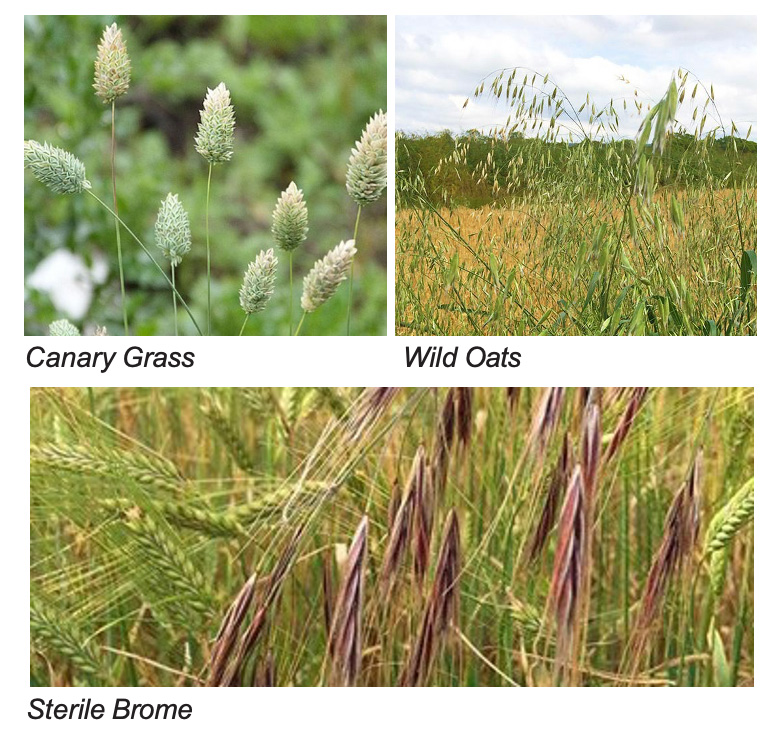
Agronomy Update
Now is a good time to walk the fields and assess any (potential) problems which may have manifested over the course of the growing season. Weeds such as blackgrass, brome grasses, canary and scutch grass should be noted. A plan of action can then be created - which fields to harvest first/last (preventing spread of weeds), or potentially discarding certain areas of fields.
Blackgrass is becoming an increasing concern in Ireland, and can become a serious problem if ignored. Each plant can produce up to 6,000 seeds/m2. Tackling it now before it produces viable seed should be a priority. Hand rogueing small areas will be beneficial, while burning off larger areas may be necessary. Consult your Drummonds Agronomist if you are unsure of identifying some grassweeds on your farm.

See below of a list of cultural methods to control weeds on your farm:
Cultural control options:
- Ploughing: to a depth of at least 6 inches to ensure inversion of the furrow, completely burying the seed.
- Allow for a wider or narrower headland when ploughing as accumulations tend to thrive where
the plough is lifted out at the headland. This is due to poor burial of the seeds in this particular area.
-
Limit the spread of seeds by ensuring ALL machinery for example, harvesters, trailers, balers etc., are cleaned out properly before entering a new field. Blowing machinery down with an air compressor is one of the best ways to do this.
-
Use certified seed: the Department of Agriculture and the Irish Seed Trade Association have adopted a zero – tolerance approach to invasive weed species. Certified seed is brome free.
-
Rotation: a non-cereal break crop allows a wider range of herbicides to tackle the problem. A spring crop allows a stale seedbed over winter. Try to avoid continuous cereal crops. Also, as weed species germinate in different seasons, switching between spring and winter cropping can reduce the build-up of the weed seed bank.
-
Shallow cultivate after harvest to encourage germination of seeds, once germinated spray with glyphosate; and then plough.
-
Delaying drilling.
We must do all we can to deal with weeds before searching for the solution from the can – this also prevents the build-up of herbicide resistance, and forms part of an Integrated Pest Management (IPM) strategy.
Planning ahead for 2023
With the majority of agronomy work now finished for 2022 cereal crops, now is a good time to start planning for the 2023 harvest.
Take note of problem areas on the farm, such as areas with weed infestations, those that need lime, fields that need to be sampled etc. Start to identify varieties suitable for your farm. Use both the AHDB and Department of Agricultures Recommended Lists to see what Wheat, Barley, Oats, Beans and Oilseed Rape are available. Evaluate and compare strengths and weaknesses of varieties. Spread risk by choosing a number of different varieties, not to place all of your eggs in one basket. Determine what rotation is needed and decide if you want to try new crops on the farm, such as Oilseed Rape or Beans.
New rules for 2022
There are new green cover requirements for tillage land in 2022 as part of the new nitrates regulations. In essence, shallow cultivation of stubbles must take place within 7 days of harvesting of straw removal. Where straw is chopped, the land
must also be shallow cultivated within 7 days to establish some green cover. These rules are now in place and will certainly prove challenging in terms of time constraints, labour and weather.
Oilseed Rape desiccation
Applying glyphosate to your oilseed rape crop has a number of benefits – less green material at harvest, improved combine efficiency, and speeds up crop ripening.
Is your Oilseed Rape crop ready for pre-harvest glyphosate?
- Select a representative area of the crop and pick at random 20 pods from the middle of the main raceme.
- Open each of the pods. When you have noticed a change of colour from green to brown in at least 2/3 of the seeds in each pod, in at least 15 of the 20 pods collected, the crop is ready for glyphosate.
- Repeat the procedure in other parts of the field to ensure the assessment is accurate for the entire field.
- Don’t forget to apply podstick with glyphosate.
- Ideally apply glyphosate to OSR when the moisture content is below 30% moisture.
- However, check market requirements for your oilseed rape before applying glyphosate!
For further information Speak to your local Drummonds Agronomist.


